
Suzuki Celerio Hatchback (2015-2019) engines, drive and performance
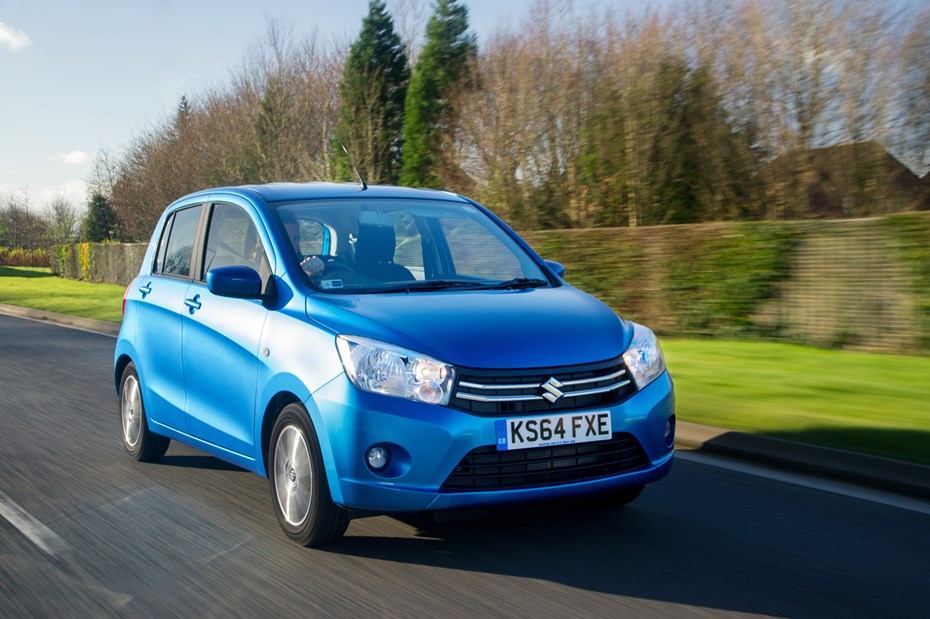
When a car’s primary function is to be space- and fuel-efficient for urban commutes it requires a range of small engines, consequently Suzuki Celerio performance is fit for purpose rather than surprising.
Petrol-only engine range
With just 835kg of Celerio to haul around, the 67bhp 1-litre, three-cylinder petrol engine is adequate for the task in hand.
Unlike many small engines, there’s no turbo on this one meaning acceleration is linear rather than gradual with a sudden surge as the turbine kicks in. It makes for smoother progress around town but can make building up to motorway speeds a touch lethargic. Official figures suggest the Celerio will reach 96mph where conditions permit and complete the 0-62mph acceleration test in a resolutely-unsporty 13.5 seconds.
Peak torque’s available from a fairly high 3,500rpm meaning you have to work the gearbox and engine to make the most of the 90Nm available, but it pulls comfortably away from standing starts at junctions without making you feel vulnerable to other traffic.
Those low output figures are a boon for efficiency, though: equipped with the standard five-speed manual transmission Suzuki posts an official claim of 65.7mpg (meaning a real-world figure in the low 50s should be possible), while CO2 emissions of 99g/km ensure it’s VED car tax exempt.
Automatic option
Rather than the conventional four-speed automatic in the ousted Alto and Splash, the Celerio is fitted with an automated five-speed manual gearbox. This means it can be driven just like a regular auto but it’s cheaper to make and thus helps keep costs lower. They’re also generally less smooth to drive than a regular automatic transmission, although Suzuki claims to have engineered out much of the hesitancy rivals’ systems suffer, as well as introducing a ‘creep’ function for low-speed manoeuvres.
Economy, emissions and top speed are identical to the manual, while the 0-62mph acceleration time increases to 16.4 seconds (or 15.2 if you use its manual override).
DualJet equals efficiency
Fitted with Suzuki’s DualJet technology, the 1-litre engine is, in performance terms, not much different. It still produces 67bhp – although torque’s increased marginally by 3Nm – so top speed remains identical, although half a second has been shaved off the 0-62mph time.
Where DualJet benefits the Celerio most is in terms of economy: the claimed average jumps to 78.4mpg (low 60s could be possible in normal road conditions), while CO2 emissions are further reduced to 84g/km. Note this engine’s initially only available in the lower SZ3 specification.
If you’re looking for small car fun and a little hatchback hilarity, then Suzuki Celerio handling traits are unlikely to deliver them.
Instead, you’ll be served a combination of fine ride quality, predictable cornering agility and ease of manoeuvrability.
While the suspension doesn’t iron out every rut and imperfection in the asphalt, it smooths the majority with impressive competence, ensuring the Celerio remains composed and unruffled over all but the most jarring of potholes.
It remains, perhaps surprisingly, composed at motorway speeds too, with little evidence of side breezes catching the Suzuki’s high sides like a sail, although the tyre roar proved intrusive.
Although it’s more at home threading through city streets than tackling challenging B-road bends, the Celerio’s light steering is accurate enough to feel safe, but does gently push wide into understeer if you carry too much speed into a corner – not that easy given the Suzuki’s available power.
There’s next to no feel through the steering such is its lightness, and our test example had a little play in the straight ahead position too.
Equally, there’s a lightness to the brake pedal too but modulating the Celerio’s stopping power is simple after a few minutes at the helm, the discs up front and drums at the rear combination offering sufficient retardation in a cost-effective package.


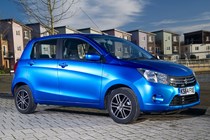
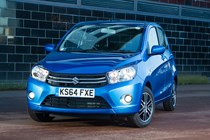
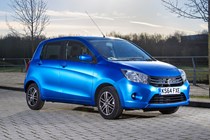
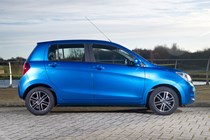

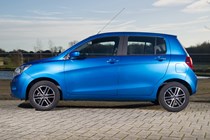
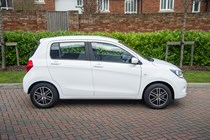
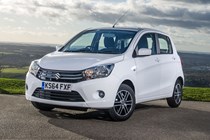
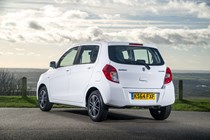
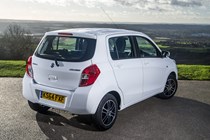
.jpg)
.jpg)
.jpg)
.jpg)
.jpg)
.jpg)
.jpg)
.jpg)
.jpg)
.jpg)
.jpg)
.jpg)
.jpg)

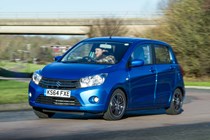
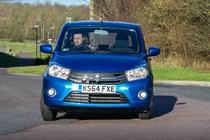

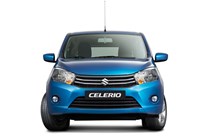
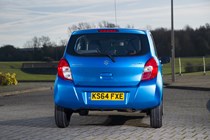
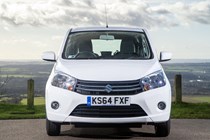
.jpg)
.jpg)
.jpg)
.jpg)
.jpg)
.jpg)
.jpg)
.jpg)
.jpg)
.jpg)
.jpg)
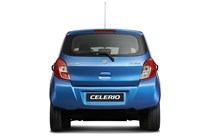
.jpg)


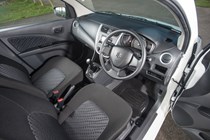
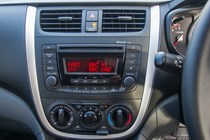


.jpg)
.jpg)
.jpg)
.jpg)
.jpg)
.jpg)
.jpg)
.jpg)
.jpg)
.jpg)
.jpg)
.jpg)
.jpg)
.jpg)
.jpg)
.jpg)
.jpg)
.jpg)
.jpg)
.jpg)
.jpg)
.jpg)
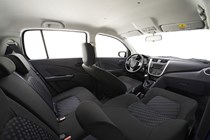

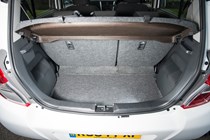

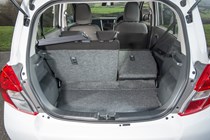
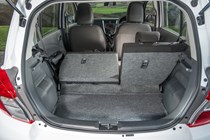
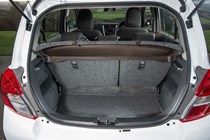
.jpg)

.jpg)
.jpg)
.jpg)
.jpg)
.jpg)

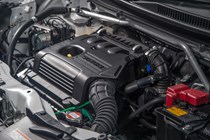
.jpg)
.jpg)
.jpg)
.jpg)










.jpg?quality=50)
.jpg?quality=50)
.jpg?quality=50)
.jpg?quality=50)
.jpg?quality=50)
.jpg?quality=50)
.jpg?quality=50)
.jpg?quality=50)
.jpg?quality=50)
.jpg?quality=50)
.jpg?quality=50)
.jpg?quality=50)
.jpg?quality=50)







.jpg?quality=50)
.jpg?quality=50)
.jpg?quality=50)
.jpg?quality=50)
.jpg?quality=50)
.jpg?quality=50)
.jpg?quality=50)
.jpg?quality=50)
.jpg?quality=50)
.jpg?quality=50)
.jpg?quality=50)

.jpg?quality=50)






.jpg?quality=50)
.jpg?quality=50)
.jpg?quality=50)
.jpg?quality=50)
.jpg?quality=50)
.jpg?quality=50)
.jpg?quality=50)
.jpg?quality=50)
.jpg?quality=50)
.jpg?quality=50)
.jpg?quality=50)
.jpg?quality=50)
.jpg?quality=50)
.jpg?quality=50)
.jpg?quality=50)
.jpg?quality=50)
.jpg?quality=50)
.jpg?quality=50)
.jpg?quality=50)
.jpg?quality=50)
.jpg?quality=50)
.jpg?quality=50)







.jpg?quality=50)

.jpg?quality=50)
.jpg?quality=50)
.jpg?quality=50)
.jpg?quality=50)
.jpg?quality=50)


.jpg?quality=50)
.jpg?quality=50)
.jpg?quality=50)
.jpg?quality=50)